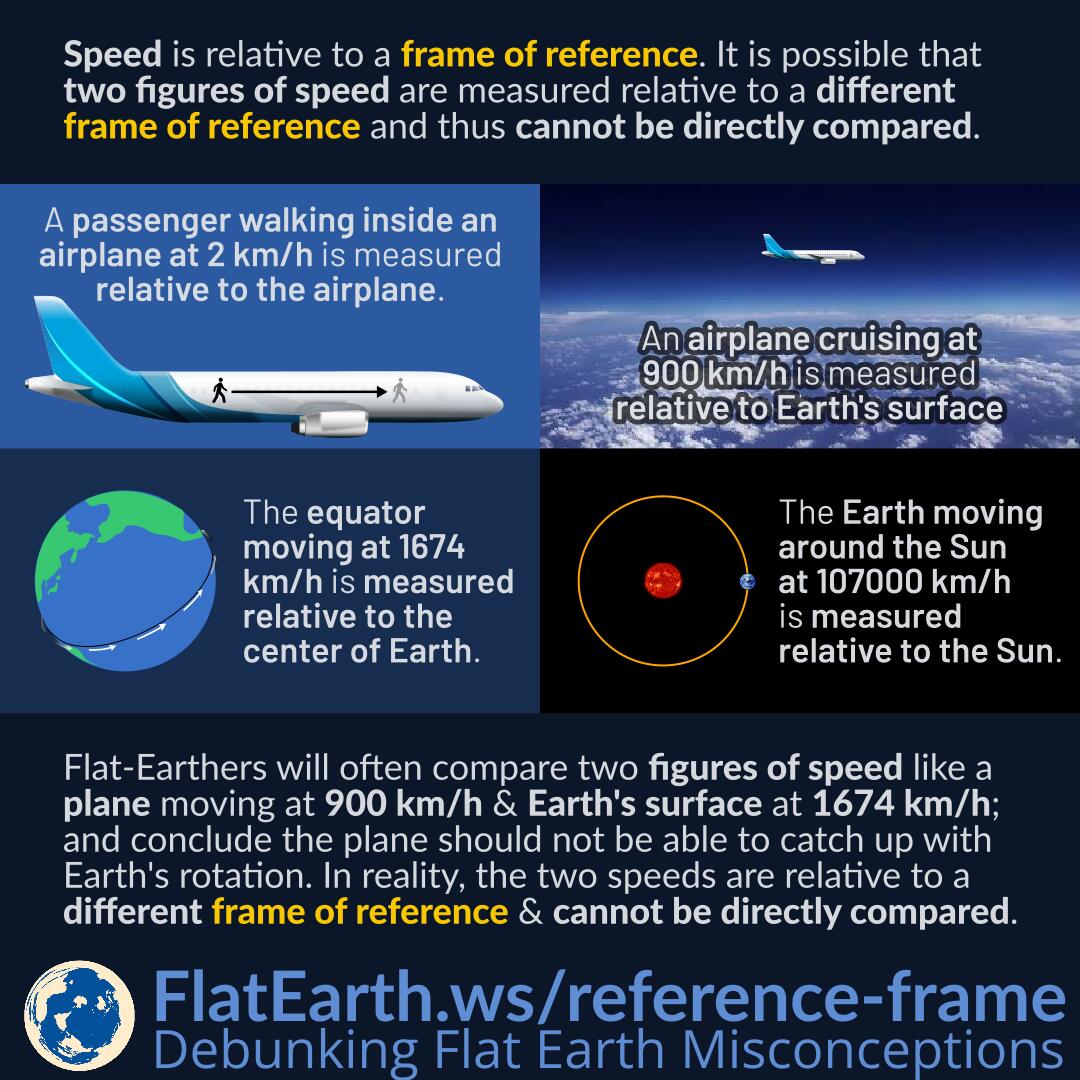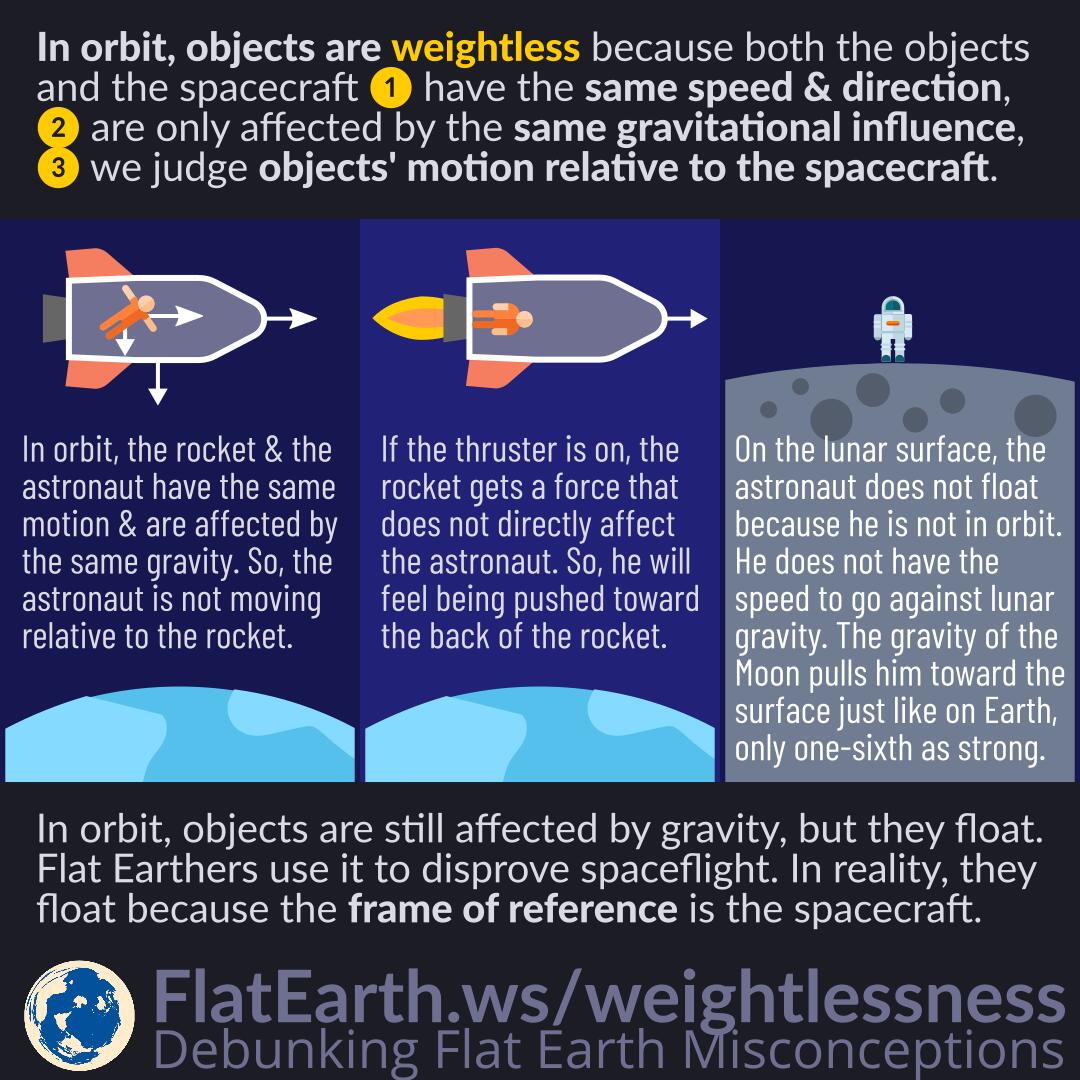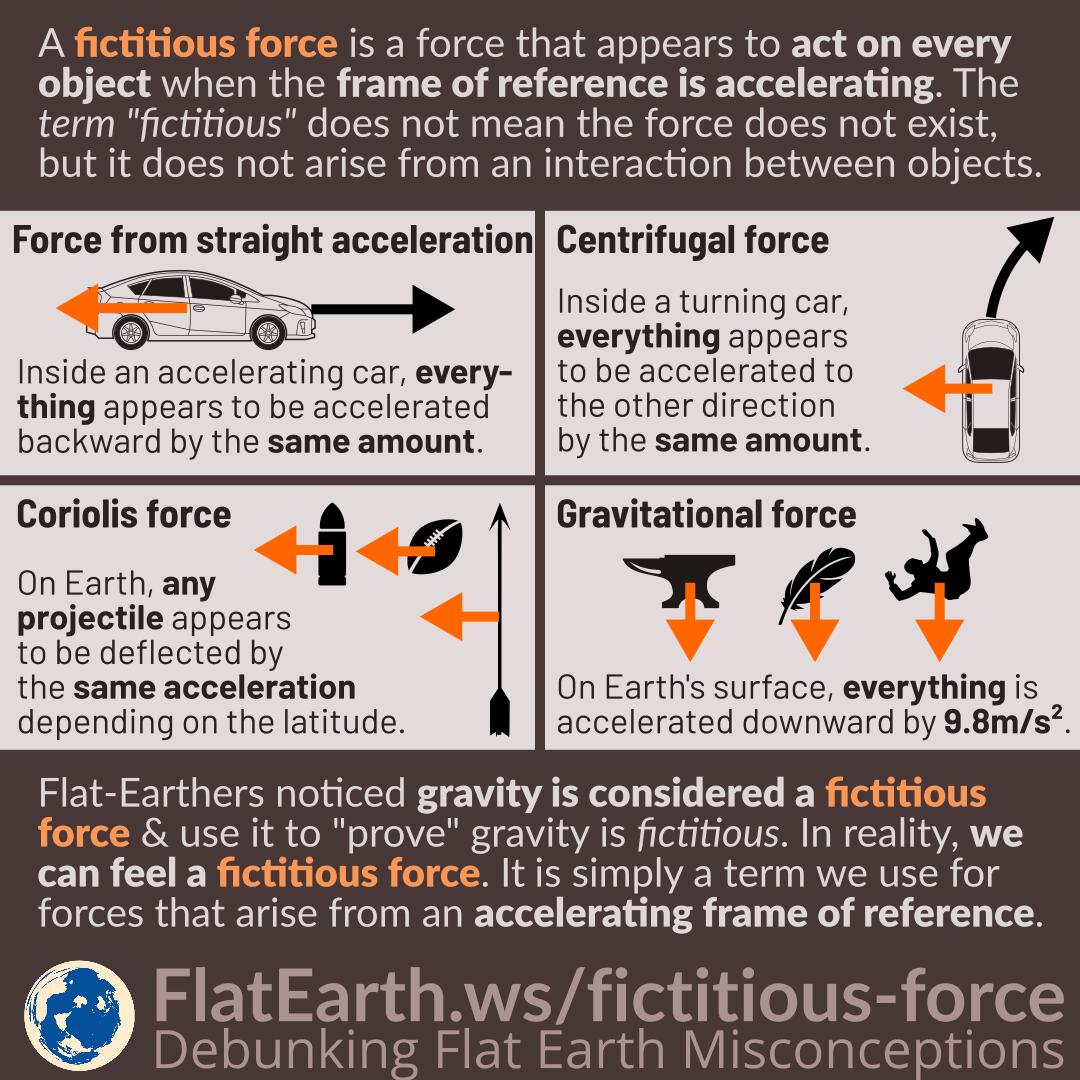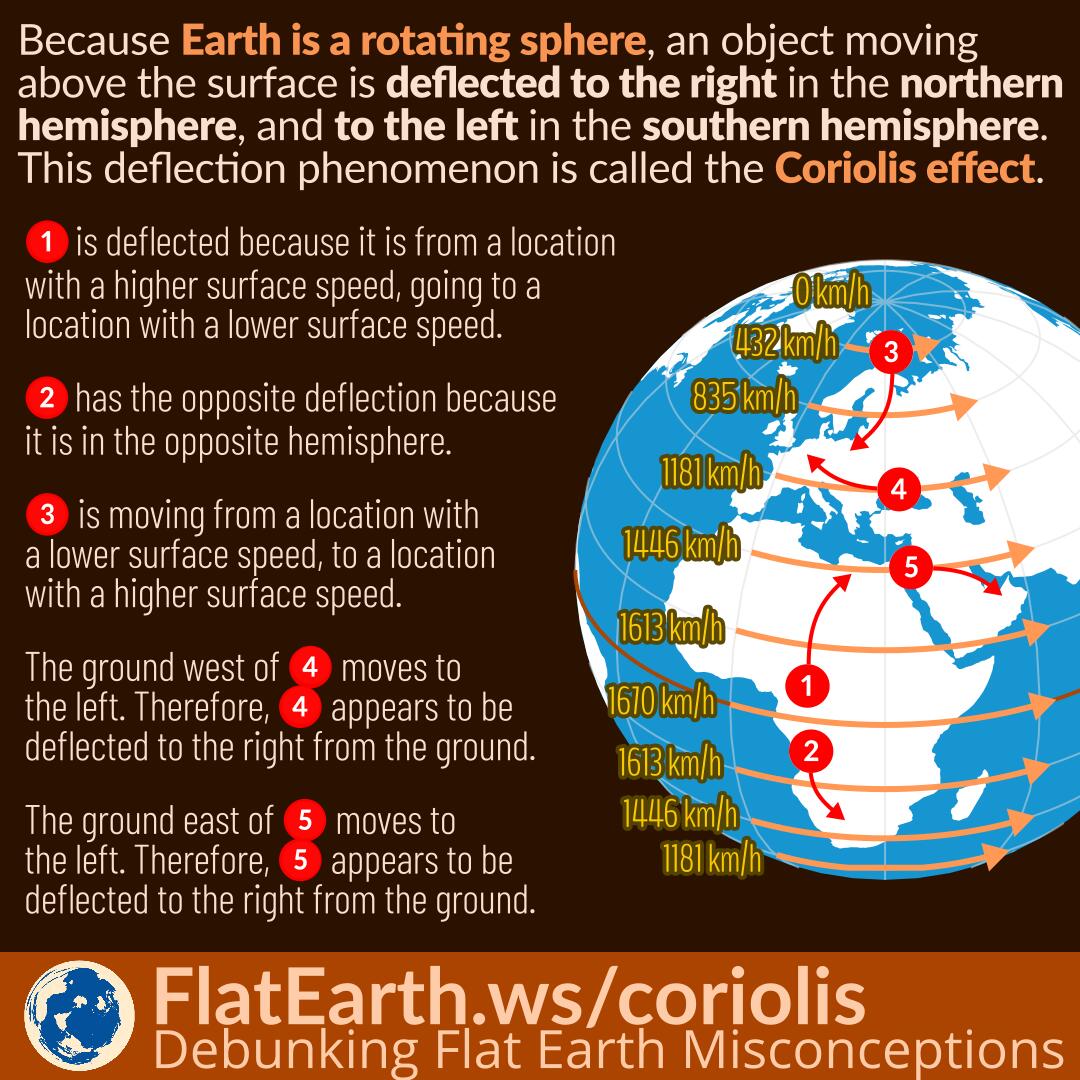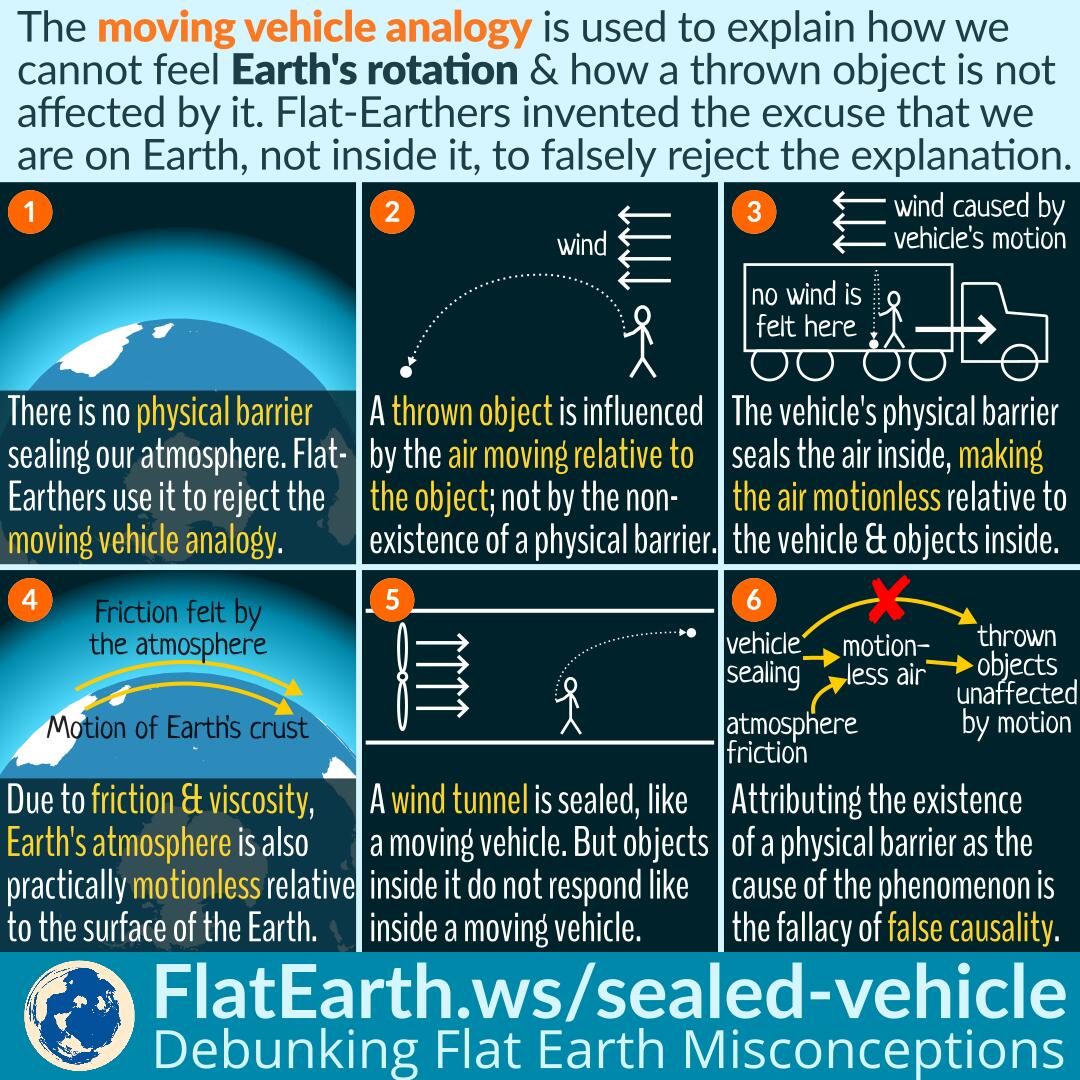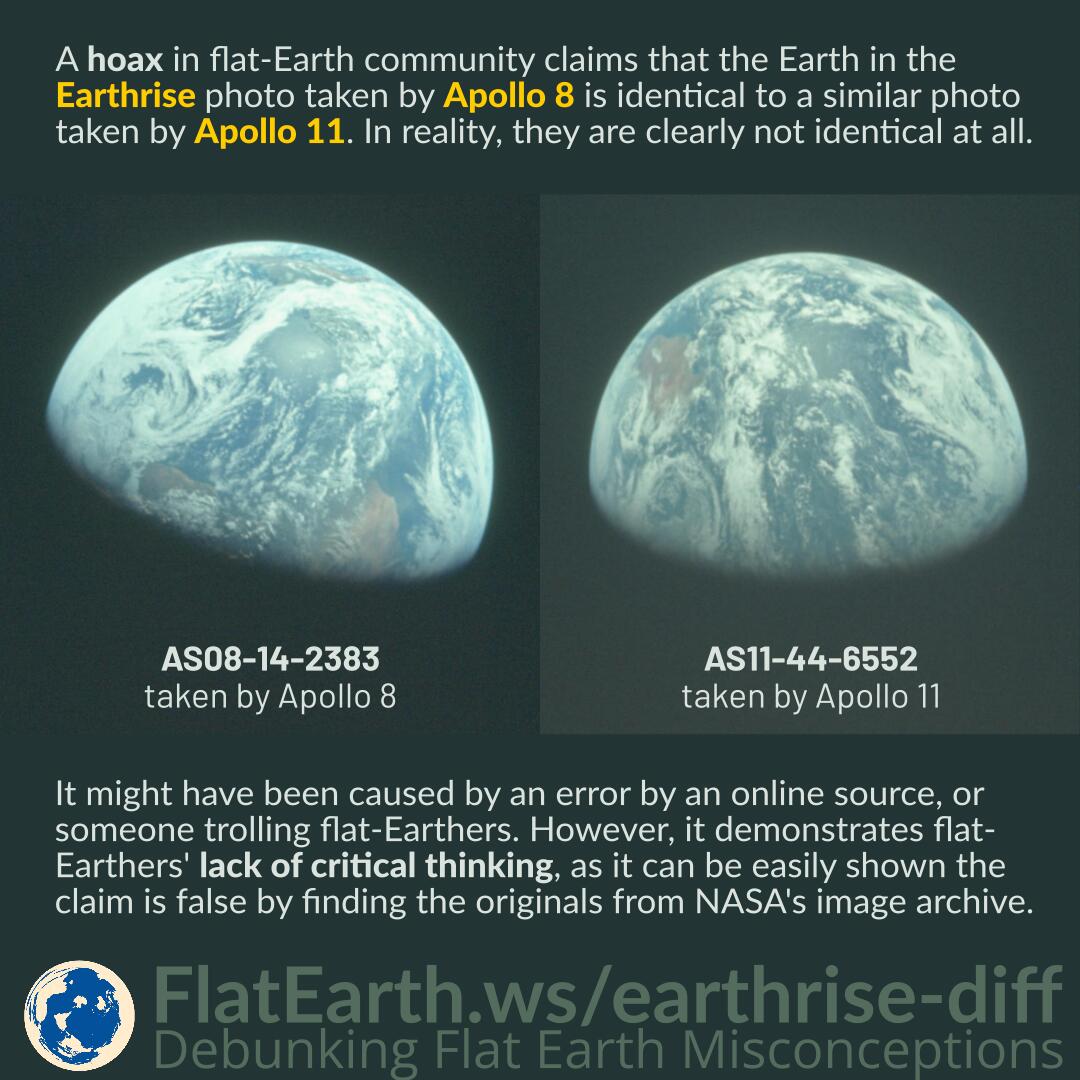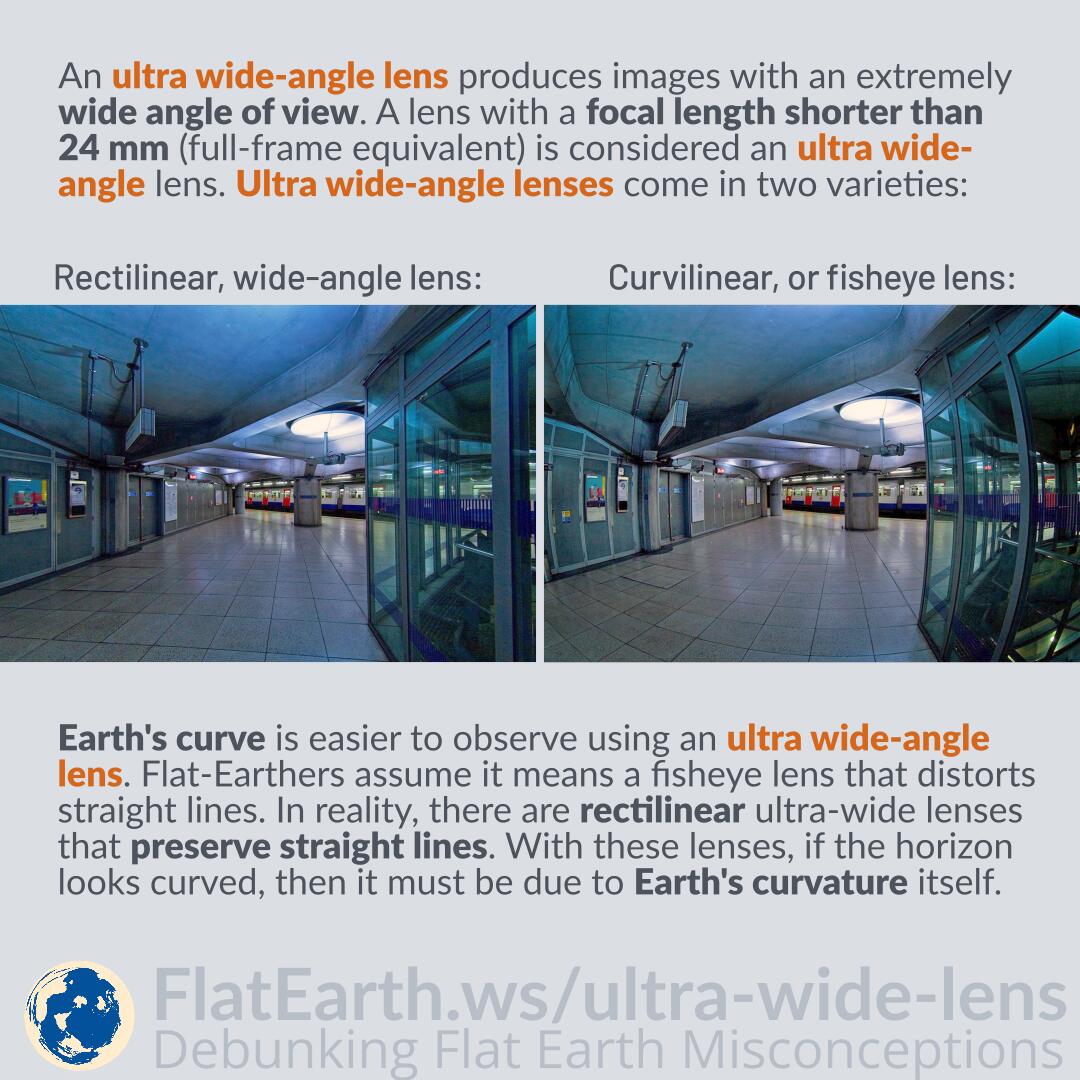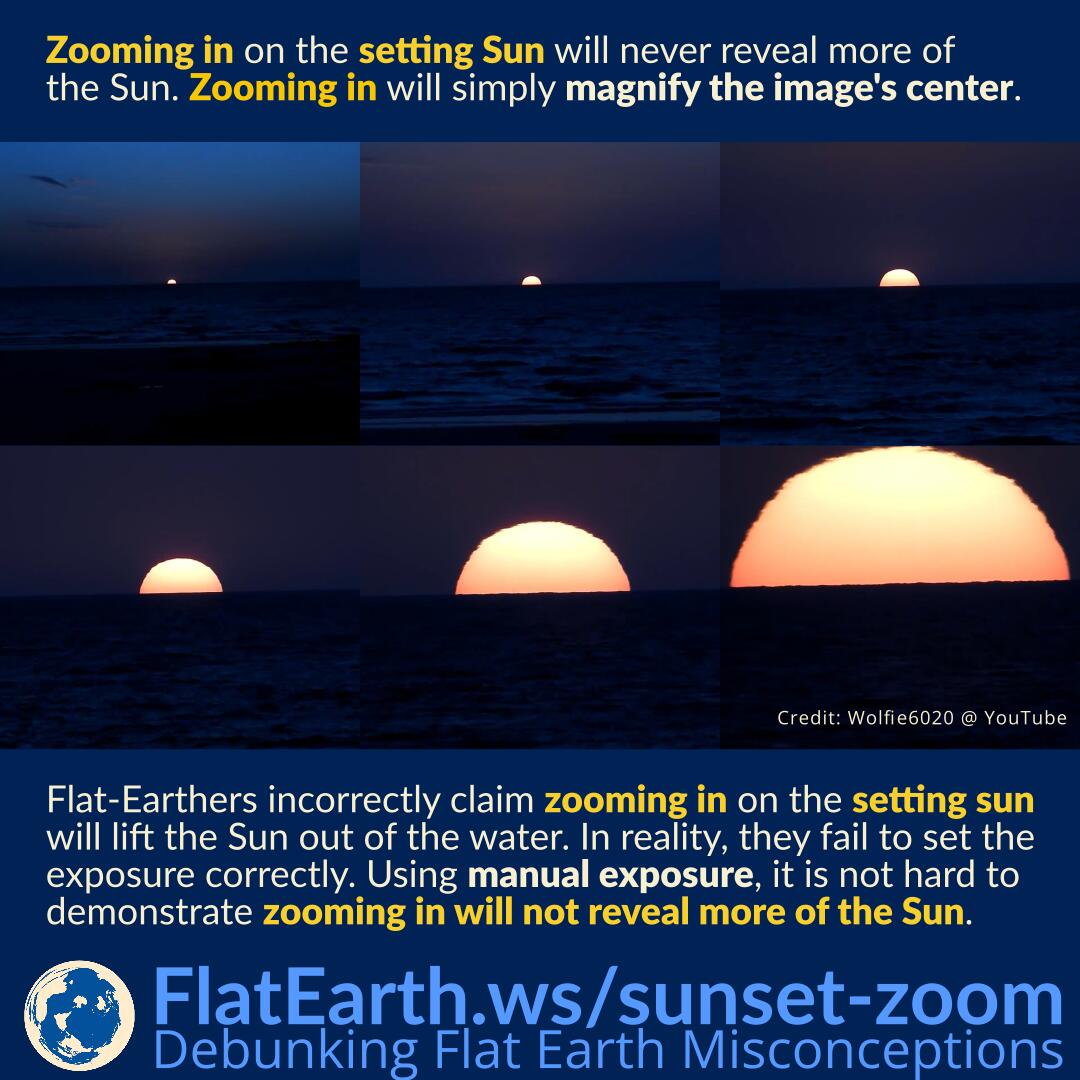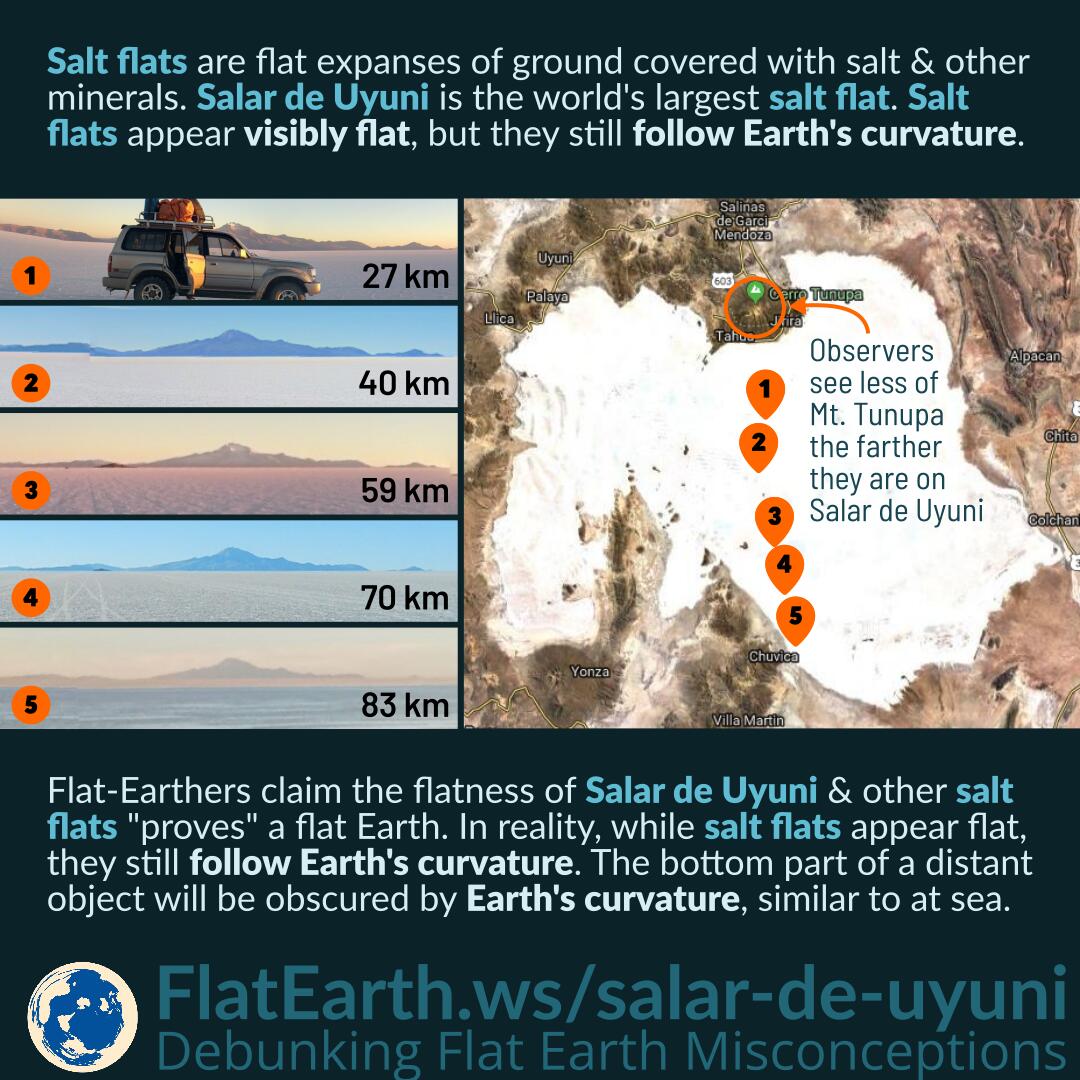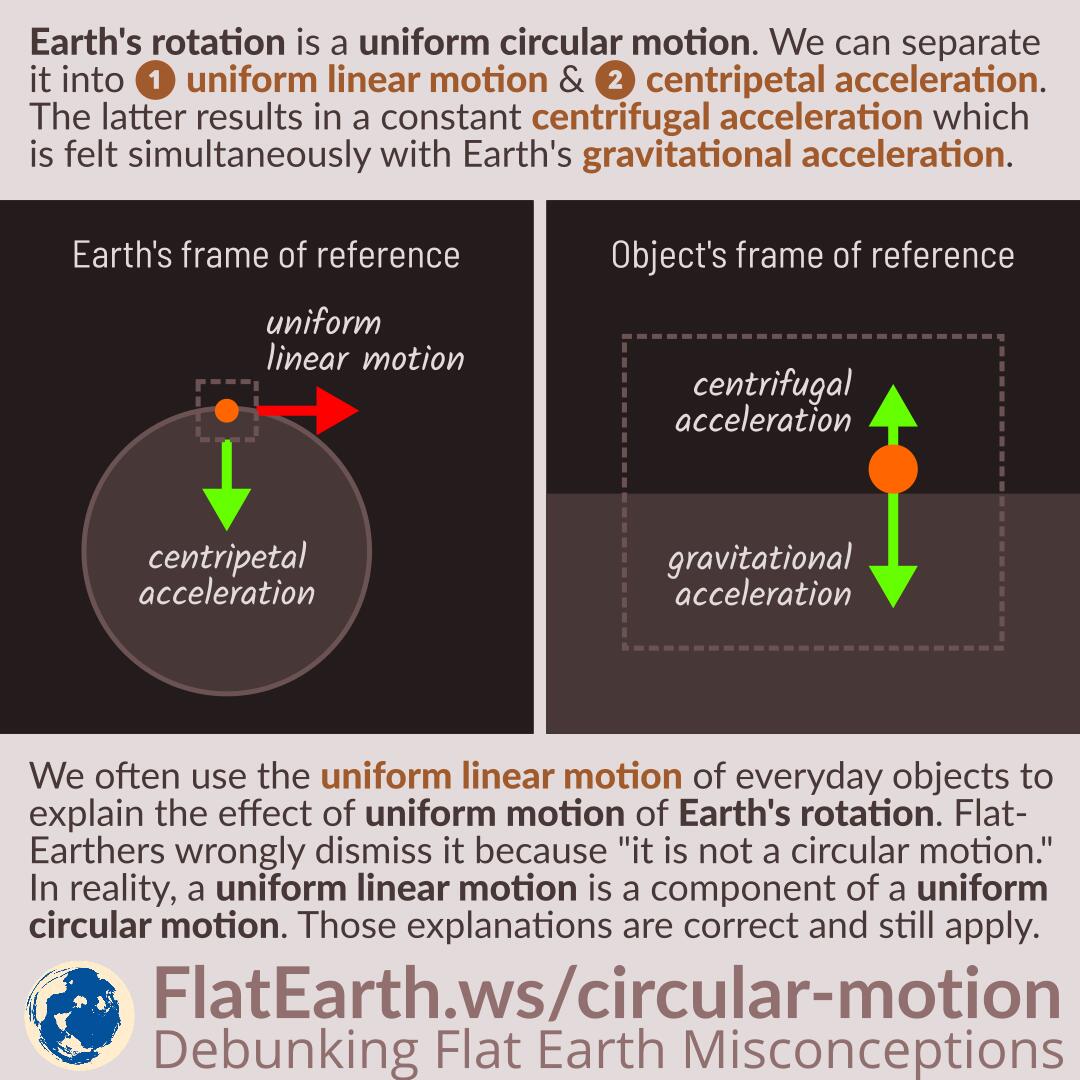A frame of reference consists of an abstract coordinate system and physical reference points that uniquely fix the coordinate system and standardize measurements. Speed or velocity is relative to a specific frame of reference. It is possible that two speeds/velocities are measured relative to a different frame of reference and thus cannot be directly compared.
Flat-Earthers like to compare two different speed measurements like an airplane moving at 900 km/h (560 mph) and Earth’s surface near the equator at 1674 km/h (1040 mph). They would conclude the airplane should not be able to catch up with Earth’s surface and would not land if the Earth is rotating. In reality, both the speeds are measured relative to a different frame of reference, and therefore, cannot be compared directly.


